
Hands (2009). © Minstrel Kuik.
Two Malaysian Contemporaries
Tan Lee Kuen looks at the work of two noted Malaysian contemporary photographers, Eiffel Chong and Minstrel Kuik.
Minstrel Kuik
Minstrel Kuik’s work is personal. An introverted individual, photography helps her to establish a relationship with her surroundings, while maintaining a safe distance. Not entirely comfortable with social interactions, her first photography project while studying at Arles National School of Photography was of sculptures made with objects from her apartment. The use of objects and the exploration of life within her inner circle continues to dominate her work.
She uses photography to examine her life back in Malaysia after spending years away – first in Taiwan, then in France – and her own identity as a woman and as a Chinese Malaysian. Her magnum opus is Mer.rily, Mer.rily, Mer.rily, Mer.rily, an on-going photo project that was started in 2008. For this series, she captures seemingly random and snapshotlike photos of the people, places and objects around her – images of her family, her hometown in sleepy Pantai Remis, her new home in Kuala Lumpur. Part of the work includes constructed scenes in which her physical self is placed in the frame, such as an arm lying languidly on a row of oranges or a hand holding up a passport. With this work, she creates a photo diary-like narrative of her life as as a native and a returnee, interjected with symbols of her womanhood and Chinese roots.
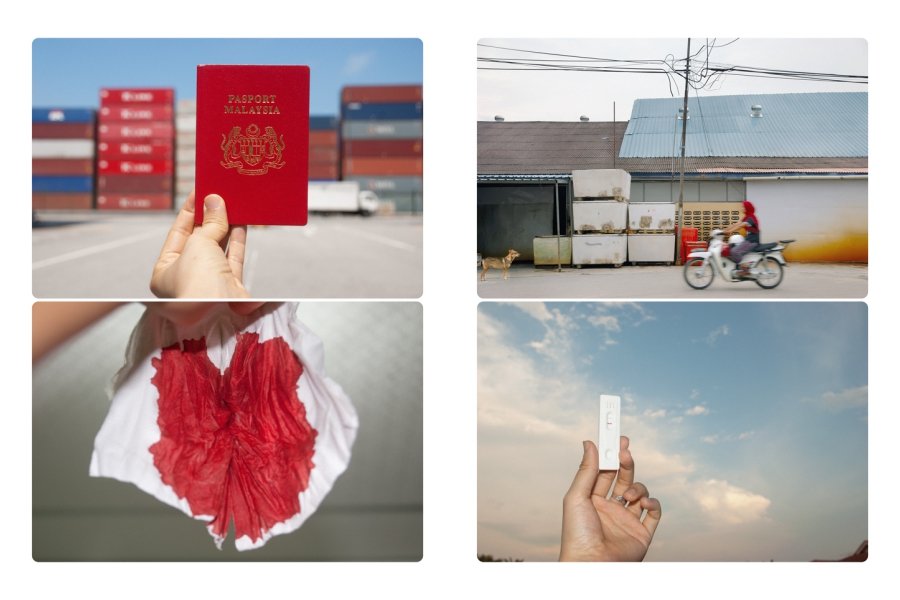
Series: Mer.rily, Mer.rily, Mer.rily, Mer.rily 007 & 008 (2008-2015) © Minstrel Kuik.
With William Eggleston’s work, the ‘snapshots’ in his photobook, The Democratic Forest, imbues the most mundance subjects the same significance as the most extraordinary. This belief in equivalance is shared by Minstrel, who said, “I have this belief that all things are equal. I don’t believe that just because I look at a certain object it becomes more important because I looked at it. Whether I discovered it or not, the object is still there. That’s why I think the snapshot is a method to acknowledge the presence of things in a specific time and space without trying to say too much.”
Minstrel has amassed thousands of photographs over the years, filed away in her computer according to month and year. When she has to show work from the series, she would dive into the archives, teasing out different narratives. “I try to select different images to create a certain relationship or narrative. By changing one photo or an arrangement, I can create a whole new story. There are endless possibilities,” she said of the painstaking process. Her handmade photobook, called A Song to Durga and currently the only one available, was sold to a Malaysian collector.
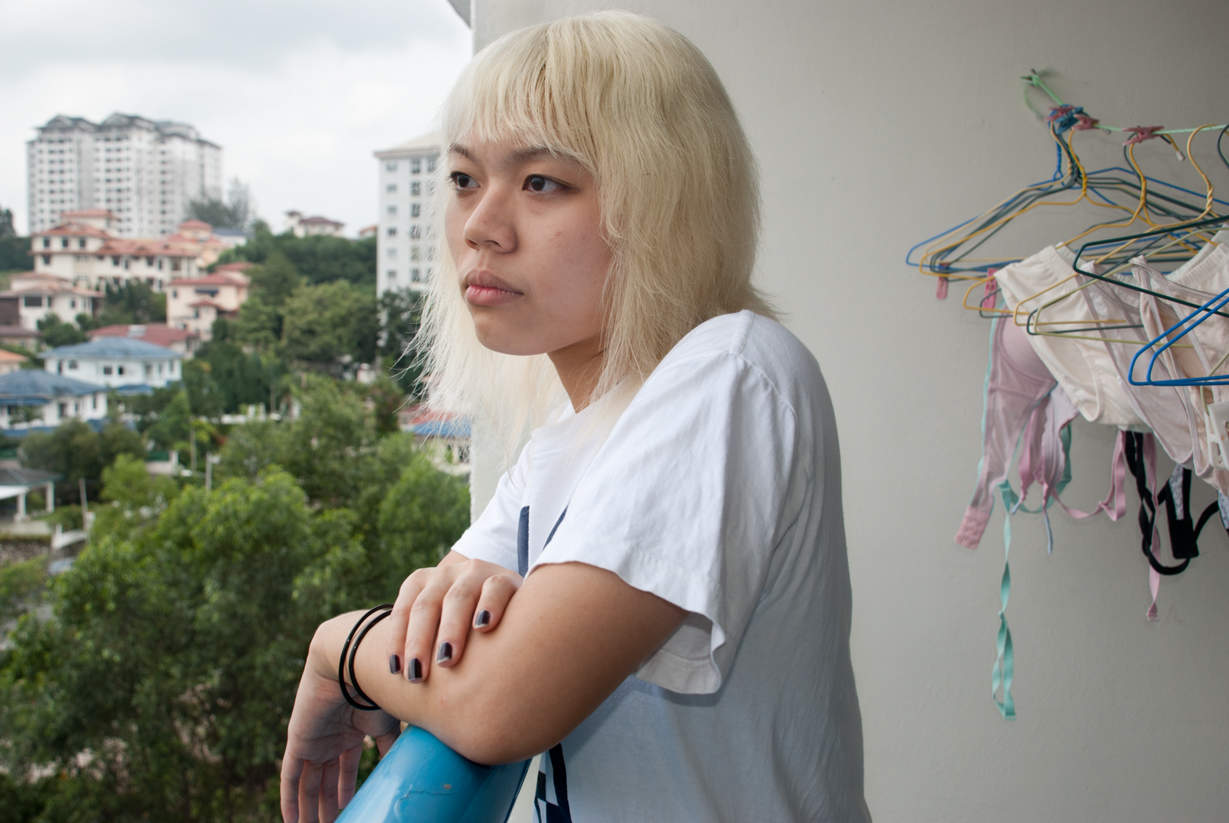
Xiao Hang is 18 years old (2008) © Minstrel Kuik.
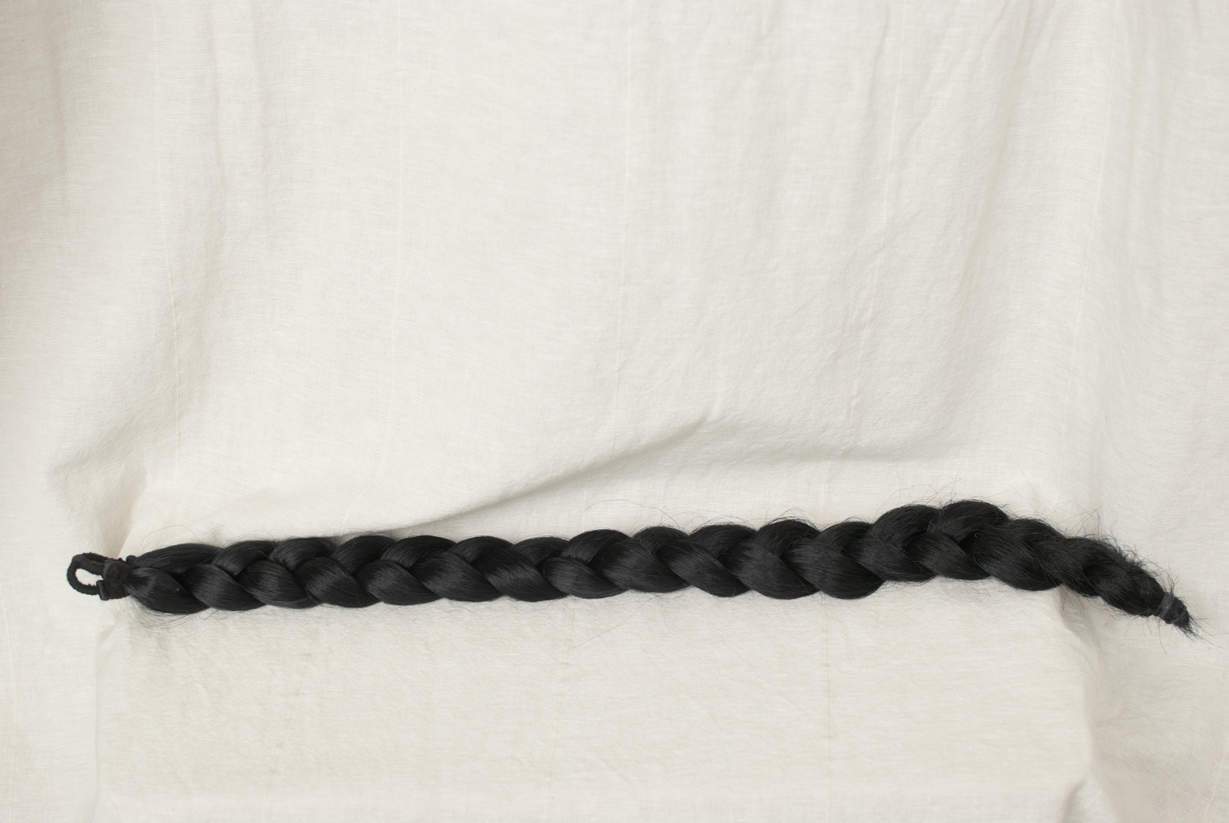
A Braid with a Beginning and an End (2014) © Minstrel Kuik.
In a curatorial essay for the group exhibition, 3 Malaysian Contemporaries, which Minstrel was a part of, curator Eva McGovern had said her work denoted loneliness. Part of the reason can be traced back to Minstrel’s growing up years in a small town in Perak. “I was bored most of the time and spent a lot of time looking at things. After dinner, I would sit in front of my house looking at the sunset. These experiences intensifies our senses, our perception.”
Of late, Minstrel has been doing a lot more painting – she studied fine art in Taipei and Versailles – winning her the UOB Painting of the Year Award in 2014. When asked if she is a photographer or an artist using the medium, she replied, “I am a photographer, but I also have other identities. Photography matters because it really helps me to establish a relationship between me and my subject matter.”
More from Minstrel Kuik: http://minstrelkuik.blogspot.sg

feels like paper cut 2. © Eiffel Chong.
Eiffel Chong
Eiffel Chong graduated with a BA in Photography from London College of Printing (now London College of Communications) and the University of East London with a Masters of Contemporary Art, but his large-scale and technically proficient vision of spaces was influenced by the photographers of Dusseldorf School. Since his first group exhibition in 2007 for Sharing Space: Contemporary Photography of Malaysia + Japan, Eiffel has been a regular fixture in the art circuit in Malaysia and around Asia.
The work is his reflection of the world and how he views it – direct and detached while exploring abstract notions of memory, place and identity. Through his photographs, he extracts beauty from the banal, significance from the commonplace, and meaning in the everyday. When I suggested to Eiffel that by photographing the minutiae of everyday life, he is exploring greater universal truths, he shook his head, “Some artists have a huge agenda that they want to educate the world. For me, doing art is just something I like doing. It is personal.”
Whether he is photographing a dusty rice cooker, unplugged and unused; empty hospital beds against silk-like peach curtains; or a giant crab reaching out in the middle of an empty sea, he exposes our sense of loneliness and isolation, if not through actual people, than through our manmade constructs. There is something a little off-kilter about Eiffel’s photographs and his carefully constructed visual narratives; he seeks to blur the boundaries between reality and fiction, inspired in part by Haruki Murakami’s existential writings.

22, institutionalised care © Eiffel Chong.
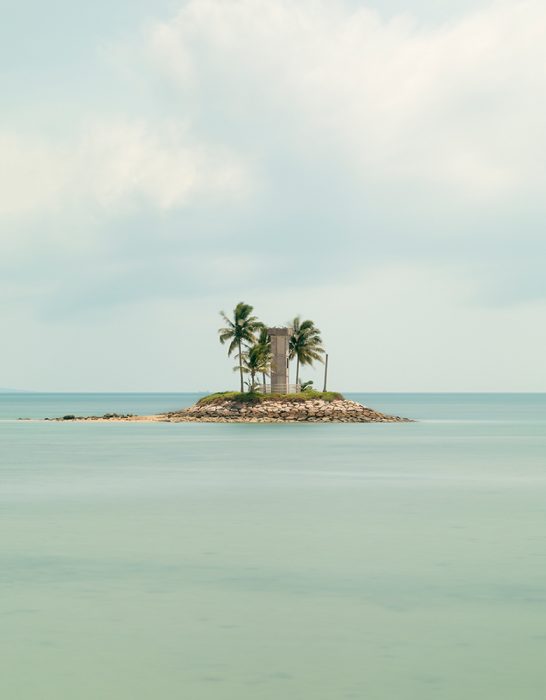
pulau bintan, seascape © Eiffel Chong.
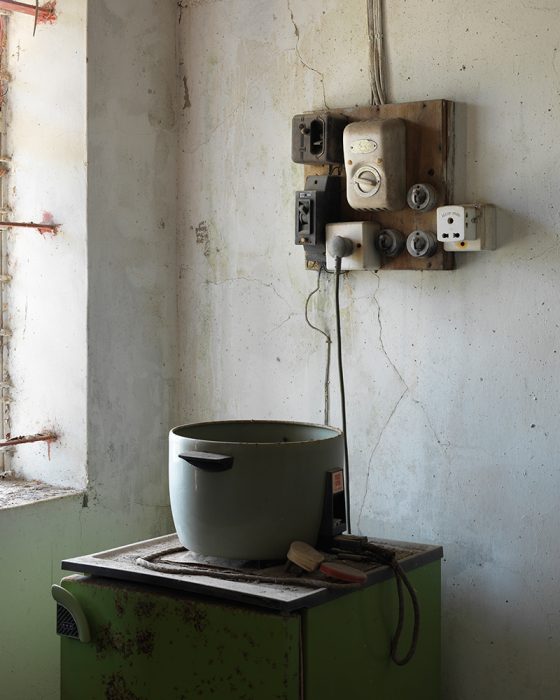
untitled #40, this used to be my playground © Eiffel Chong.
Eiffel rarely photographs people. When they are depicted, they are small and insignificant, like ants scurrying about in the landscape or in waterstained, found photographs from a disused police station. But even without their bodily presence, the hand of man is ever-present in his work, presenting an uneasy relationship between humans and their environment.
This relationship is extended to his work Seascape, which has been compared to Dutch paintings because of its painterly qualities and sublime light. The tranquil landscape of sea and sky, an ode to nature, is disrupted by the presence of manmade structures – an island with coconut trees fringing a cement building, a jetty stretching out to sea – reminding us of man’s omnipresence, and attendant notions of life, death and the absurd.
More from Eiffel Chong: http://www.eiffelchong.com
~
Text by Tan Lee Kuen. Lee Kuen is a Malaysian writer and photographer. More of her writing on Asia PaperCamera.
Share
